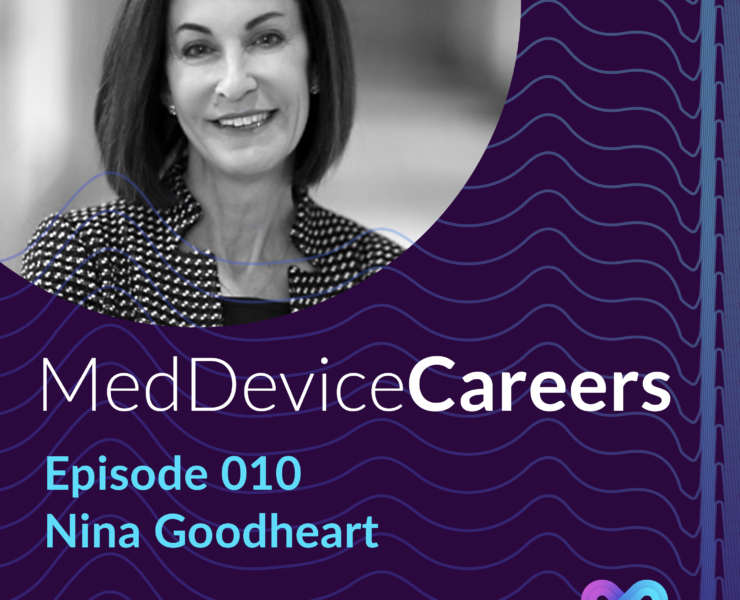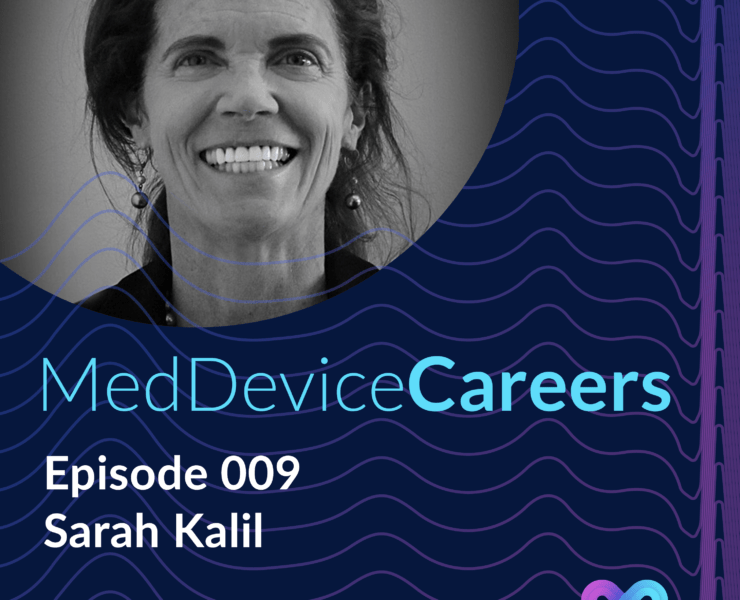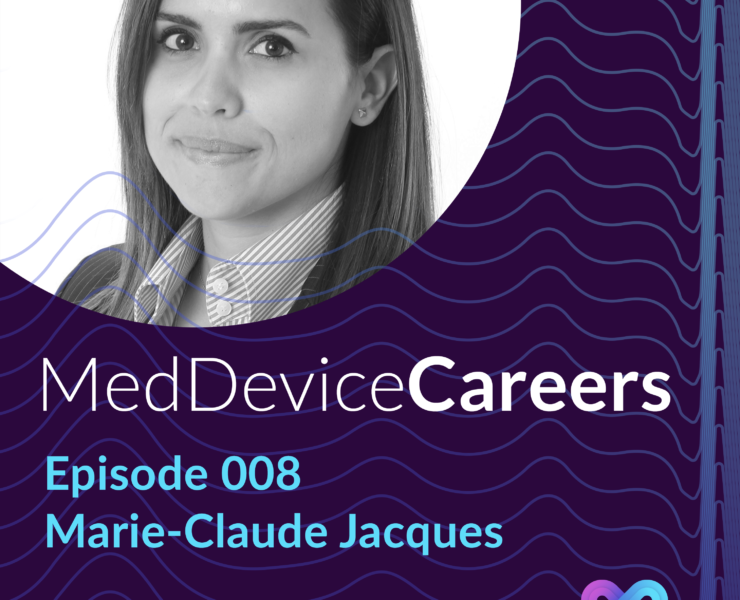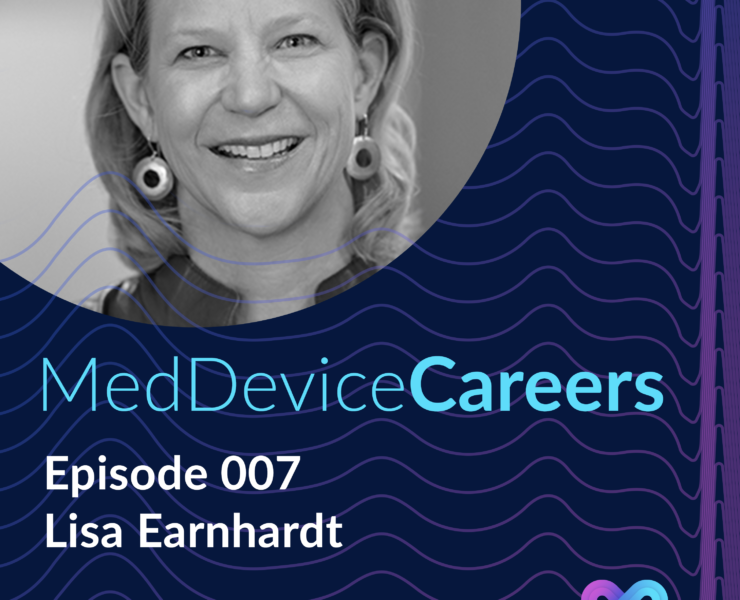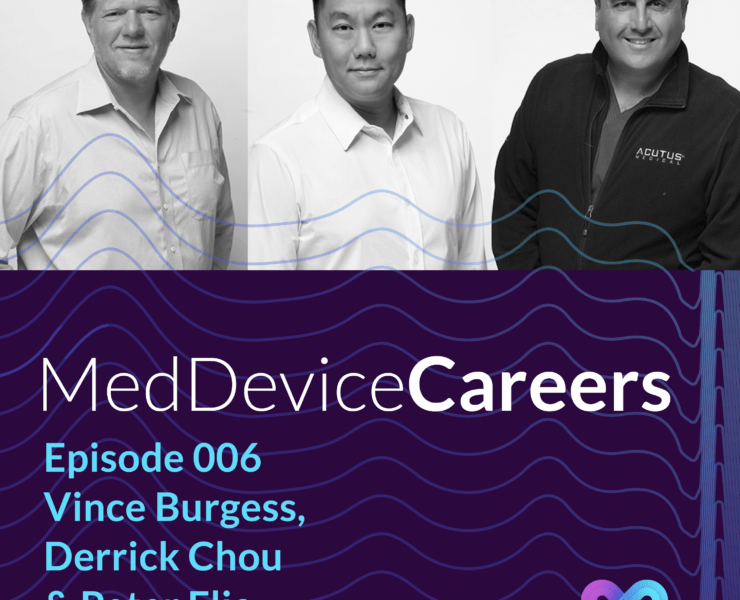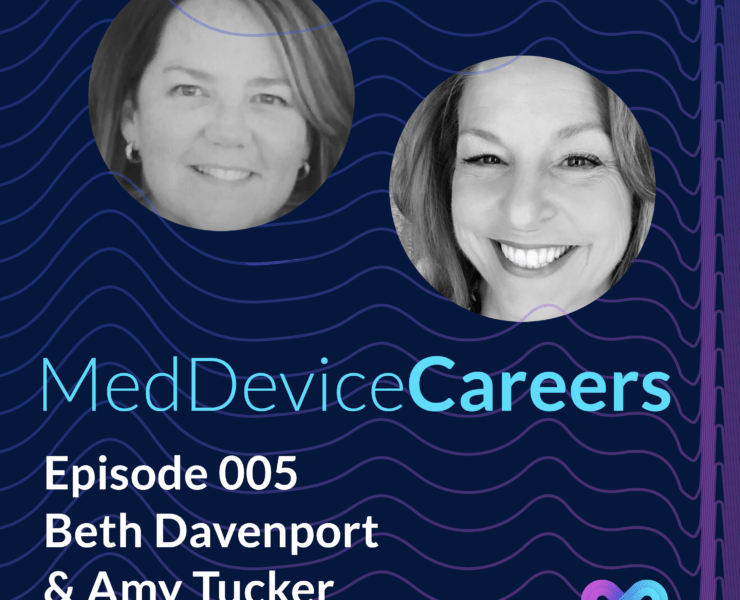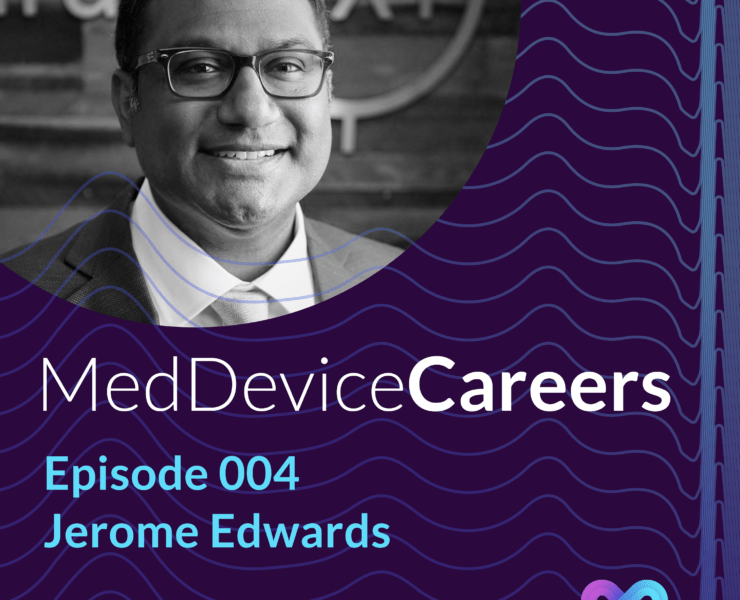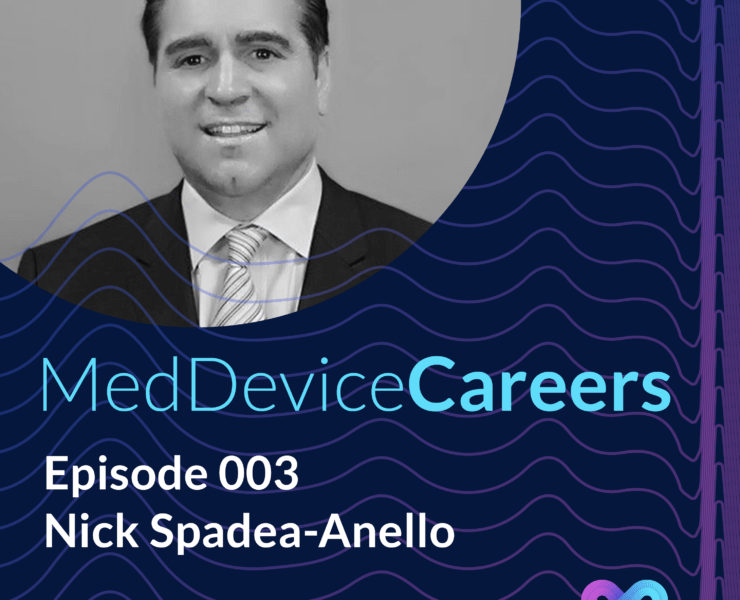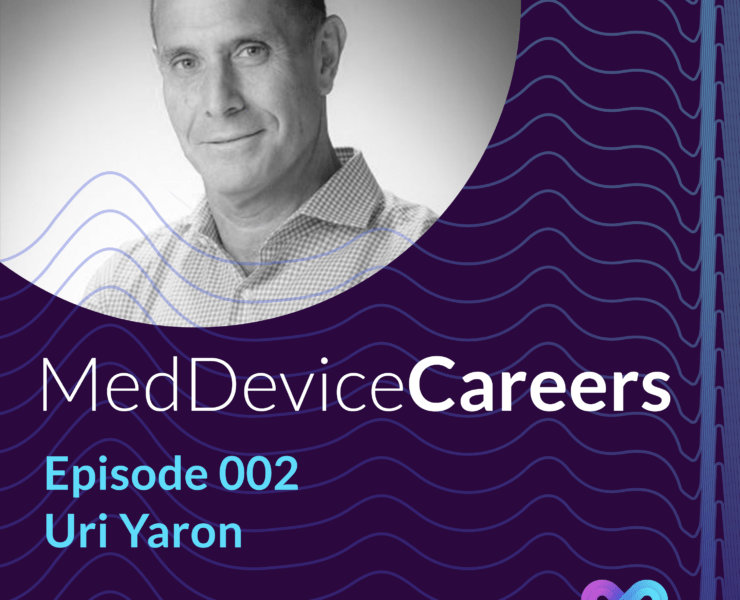The PrepMD Passport Series is a self-directed and Self-paced online learning resource: Cardiac Rhythm Management, Electrophysiology, Interventional Cardiology & Structural Heart. The Passport Holders master cardiac anatomy and physiology foundational knowledge and cardiac medical device fundamentals in the following cardiac specialities: Cardiac Rhythm Management, Electrophysiology, Structural Heart, Interventional Cardiology and Remote Monitoring. The Training Glossary showcases the modules included in the online learning modules and hands-on workshops.
PrepMD Passport Series is a self-paced and self-directed online learning resource. The Cardiac Rhythm Management (CRM) Pathway assumes no prior knowledge of the cardiac space, beginning with foundational lessons in anatomy and rhythm analysis and progresses all the way to advanced concepts and virtual clinical rotations.
Individuals will build a strong conceptual and practical understanding of cardiac rhythm management, including the diseases and treatments used such as implantable pacemakers and defibrillators. Modalities used with the Passport Series include video Lessons and their accompanying Knowledge Checks, 3D interactive virtual modules, simulations, virtual clinical rotations and comprehensive self-assessments that allow the individual to test their comprehension and critical thinking for the entire course.
The following modules are covered in detail:
Anatomy & Physiology
• Basic function of the heart
• Important anatomical structures including walls, chambers, valves, and vessels
• Cardiopulmonary circulation and the role of the coronary arteries and veins
• Normal cardiac physiology: how the healthy heart functions
• Changes in volume and pressure during the cardiac cycle
• Basic electrophysiology of the heart
• Electrical properties of cardiac cells
• Relationship between the action potential and the ECG
• Intrinsic refractory periods
• Cardiac conduction system pathway and physiology
• Role of the autonomic nervous system in regulating cardiac function
ECG Interpretation
• Einthoven’s triangle and the basics of the electrocardiogram
• How to record an ECG using surface electrodes
• Analysis and dissection of ECG waveforms
• Importance of ECG waveform morphologies
• Step-by-step analysis of an ECG rhythm strip including rate, regularity, P waves, PR interval, and QRS duration
• 12 lead ECG as a 3D depiction of the electrical activity of the heart
• Assessment of myocardial ischemia, injury, and infarction using a 12 lead
• Interpretation of cardiac axis
• Bundle branch block anatomy and ECG morphology
Rhythm Analysis
• Normal sinus rhythm and sinus node dysfunction
• Physiologic vs. pathologic rhythm abnormalities
• Bradyarrhythmias vs. tachyarrhythmias and the role of autonomic tone
• Sinus pauses and the difference between impulse formation and impulse conduction disorders
• Atrial ectopy: premature atrial contractions and paroxysmal atrial tachycardia
• Atrial flutter and atrial fibrillation waveforms and ventricular response
• Junctional escape rhythms and junctional arrhythmias
• Patterns and morphologies of premature ventricular contractions
• Progression in severity from monomorphic ventricular tachycardia to polymorphic ventricular tachycardia to ventricular fibrillation
• Idioventricular rhythms and ventricular asystole
• Differentiating between first-, second-, and third-degree heart blocks and the importance of the PR interval
Introduction to Cardiac Rhythm Management
• Introduction to CRM and cardiac implantable electronic devices (CIEDs)
• Classifications of indications and level of evidence
• Myocardial stimulation: thresholds and refractory periods
• Sensing intracardiac signals
• Overview of CIED components and review of electrical concepts
Brady Therapy
• Indications for brady therapy and device selection for different underlying rhythms
• Review of CIED components with an emphasis on brady-only devices
• Classifying modes of single and dual chamber pacing using the NBG code
• Single and dual chamber timing cycles and learning to think like a pacemaker
• Step-by-step analysis of single and dual chamber paced rhythms
• Common device failures: sensing, pacing, and pseudo malfunctions
• Upper rate behavior in complete heart block patients
• Pacemaker-mediated tachycardia in patients with retrograde conduction
• Chronotropic incompetence and the need for rate response algorithms
• Mode switching algorithms to prevent the tracking of atrial tachyarrhythmias
• Dangers of RV apical pacing and algorithms to promote intrinsic conduction
Tachy Therapy
• Sudden cardiac death: connections and differences between other cardiac conditions
• ICD indications: primary vs. secondary prevention patients
• Components of an ICD: design challenges of providing high-voltage therapy
• Shock therapy as a method of treating ventricular arrhythmias and preventing SCD
• Antitachycardia pacing used to break reentrant circuits
• Changes to brady operation in tachy devices
• Auto-adjusting sensitivity as a method of sensing smaller ventricular fibrillation signals
• Detecting ventricular tachyarrhythmias using rate and duration parameters
• SVT discriminators to prevent inappropriate shocks
Cardiac Resynchronization Therapy
• Heart failure as a progressive disease
• Heart failure categorization: left-sided vs. right-sided, chronic vs. acute, preserved vs. reduced ejection fraction
• Cardiomyopathy: dilated, hypertrophic, and restrictive
• Compensatory mechanisms as a positive feedback loop for heart failure
• Diagnosing heart failure, particularly worsening congestive heart failure
• Managing heart failure through polypharmacy
• Cardiac resynchronization therapy as treatment for dilated cardiomyopathy causing electrical and mechanical dysfunction
• Clinical trials for CRT devices
• Challenges of biventricular capture and the LV lead, including thresholds, phrenic nerve stimulation, and anodal capture
• Components of CRT-P and CRT-D devices
CIED Implant
• Preparation of the patient and equipment for basic CIED implant
• Common venous access sites and standard pacemaker lead and device placement
• Flow of the CIED implant procedure, with an emphasis on the role of the device specialist
• PSA testing and device-based testing for a variety of common patient rhythms
• Special considerations for the implant of an ICD, including recent developments to tachy programming guidelines
• Defibrillation threshold testing: indications and the role of the device specialist
• Special considerations for the implant of biventricular devices, with a focus on the challenges of the LV lead
• Using venograms to assist in LV lead placement
• Overview of developing techniques and technologies, including leadless pacemakers, specialized leads for physiologic pacing sites, single lead VDD ICDs, and the SICD
Patient Follow Up and Advanced Programming
• Introduction to programmers, including common features across companies, and the basic set-up process
• PUBLSTOP: a systematic process for device follow up
• Systematic process for tachy EGM analysis
• Special considerations for CRT EGM analysis
• Introduction to remote monitoring, including history, technology, and the role of clinical staff in managing remote alerts
• Implantable loop recorders: indications, implant, and follow up
• Advanced timing cycles: ventricular-based, atrial-based, and modified atrial-based
• Specialized algorithms for managing atrial arrhythmias
• Overview of special features and algorithms of brady devices
• Prevalence and causes of loss of capture and the benefits of autocapture algorithms
Advanced Follow Up and Patient Management
• Advanced follow up, including common capture, sensing, and lead problems
• Causes and management of pacemaker syndrome
• Aberrant conduction: causes and clinical relevance for device patients
• Overview of antiarrhythmic and their interactions with CIEDs
• Optimizing CRT therapy for non-responders
• Magnet application and perioperative management of CIEDs
• Lead management: pros and cons of abandonment vs. extraction
• Generator changes and upgrades: special considerations and the role of the device specialist
• Function and uses of temporary pacemakers
Capstone Series: Cardiac Rhythm Management
The Capstone Series in CRM offers advanced conceptual learning in Cardiac Rhythm Management and provides practical learning experience through virtual hands-on and clinicals developed while collaborating with our clinical partners.
- CRM Capstone Section 1: CIED Implant
- CRM Capstone Section 2: Patient Follow Up and Advanced Programming
- CRM Capstone Section 3: Advanced Follow Up and Patient Management
- CRM Capstone Section 4: Device Programming 1
- CRM Capstone Section 5: Device Programming 2
- CRM Capstone Section 6: Device Programming 3
The PrepMD Passport Series is a self-directed and self-paced online learning resource that begins with foundational modules in anatomy and rhythm analysis and progresses all the way to advanced concepts in Electrophysiology. The Passport Users build a conceptual and practical understanding of Electrophysiology, including the illnesses and treatments used.
The following modules are covered in detail:
Anatomy & Physiology
- Basic function of the heart
- Important anatomical structures including walls, chambers, valves, and vessels
- Cardiopulmonary circulation and the role of the coronary arteries and veins
- Normal cardiac physiology: how the healthy heart functions
- Changes in volume and pressure during the cardiac cycle
- Basic electrophysiology of the heart
- Electrical properties of cardiac cells
- Relationship between the action potential and the ECG
- Intrinsic refractory periods
- Cardiac conduction system pathway and physiology
- Role of the autonomic nervous system in regulating cardiac function
ECG Interpretation
- Einthoven’s triangle and the basics of the electrocardiogram
- How to record an ECG using surface electrodes
- Analysis and dissection of ECG waveforms
- Importance of ECG waveform morphologies
- Step-by-step analysis of an ECG rhythm strip including rate, regularity, P waves, PR interval, and QRS duration
- 12 lead ECG as a 3D depiction of the electrical activity of the heart
- Assessment of myocardial ischemia, injury, and infarction using a 12 lead
- Interpretation of cardiac axis
- Bundle branch block anatomy and ECG morphology
Rhythm Analysis
- Normal sinus rhythm and sinus node dysfunction
- Physiologic vs. pathologic rhythm abnormalities
- Bradyarrhythmias vs. tachyarrhythmias and the role of autonomic tone
- Sinus pauses and the difference between impulse formation and impulse conduction disorders
- Atrial ectopy: premature atrial contractions and paroxysmal atrial tachycardia
- Atrial flutter and atrial fibrillation waveforms and ventricular response
- Junctional escape rhythms and junctional arrhythmias
- Patterns and morphologies of premature ventricular contractions
- Progression in severity from monomorphic ventricular tachycardia to polymorphic ventricular tachycardia to ventricular fibrillation
- Idioventricular rhythms and ventricular asystole
- Differentiating between first-, second-, and third-degree heart blocks and the importance of the PR interval
Introduction to Electrophysiology
- Diagnostic benefits of the electrophysiology study
- EP study equipment: focus on intracardiac catheters
- Role of different staff in the EP lab in caring for the patient and aiding in the procedure
- Overview of the EP study procedure
- Standard catheters and placement: high right atrium, His bundle, coronary sinus, right ventricular apex
- Intracardiac electrograms: looking under the surface of the surface ECG
- Standard intracardiac intervals and their relationship to the conduction system
Mechanisms of Tachycardia
- Enhanced normal automaticity vs. abnormal automaticity
- Conditions required to create a reentrant circuit
- Afterdepolarizations and triggered activity
- Dual pathway physiology and the risk of AV nodal reentrant tachycardia (AVNRT)
- Anatomy of the triangle of Koch: fast and slow pathways
- Bypass tracts and the risk of atrioventricular reentrant tachycardia (AVRT)
- Proposed mechanisms of atrial fibrillation
- Typical vs. atypical atrial flutter: the role of the cavo-tricuspid isthmus
- Mechanisms of ventricular tachycardias and ventricular fibrillation
Conduction System Assessment
- Review of the EP study and common catheter placement
- How unipolar and bipolar EGMs are sensed and filtered to provide different information about the underlying cardiac tissue
- EP refractory periods measured using PES and how they differ from standard definitions
- Clinical applications of the effective, relative, and functional refractory periods
- How to analyze EP EGMs and applications to common pacing tests
- Measuring the health of the sinus node with sinus node recovery time
- Standard PES protocols for atrial and ventricular incremental and extrastimulus pacing
- Appearance of common SVTs on EP EGMs, including AVNRT, AVRT, atrial flutter, and atrial tachycardia
Ablation Therapy
- History of ablation, including a discussion of past modalities like DC ablation and emerging modalities like pulsed field ablation
- Biophysics of radiofrequency ablation and the many catheter advances to make ablation safer and more effective
- Cryothermal ablation and the use of the cryoballoon in pulmonary vein isolation
- AV junction ablation as a method of preventing rapid ventricular response
- Activation mapping to ablate focal atrial tachycardia
- Ablation of the slow pathway to break AVNRT
- Bypass tract mapping and ablation to treat AVRT
- Cavotricuspid isthmus ablation for typical flutter
- Pulmonary vein isolation and other techniques for atrial fibrillation
- Using the 12 lead ECG to map and ablate focal PVCs and VT
EP Mapping
- Techniques for mapping arrhythmia origins and pathways using EGMs including activation mapping, pace mapping, entrainment
- Methods to differentiate between similar looking SVTs like AT, AVRT, and AVNRT
- Parahisian pacing to identify extranodal pathways
- Electroanatomical mapping and its usage in EP procedures
- EAM system components and variations
- Types of electroanatomical maps including substrate and activation mapping
- Standard diagnostic and ablation catheter selection for different arrhythmias
- Role of the EP mapper and standard mapping tasks
Advanced Ablation
- Advanced mapping and ablation techniques for right and left atrial flutter
- The importance of bidirectional block in isolation ablations
- Methods of mapping and ablating accessory pathways for AVRT
- Considerations when ablating the slow pathway for AVNRT
- Evolving ablation indications and strategies for atrial fibrillation patients
- Advanced mapping and ablation strategies for ventricular tachycardias
- Intracardiac echocardiography and its use in guiding EP procedures
- Emerging ablation technologies, including laser balloon ablation, robotic ablation, and pulsed-field ablation
The PrepMD Passport Series is a self-directed and self-paced online learning resource that begins with foundational modules in anatomy and rhythm analysis and progresses all the way to advanced concepts and virtual clinical rotations in Interventional Cardiology and Structural Heart. The Passport Users build a conceptual and practical understanding of Interventional Cardiology and Structural Heart, including the illnesses and treatments used.
The following modules are covered in detail:
Anatomy & Physiology
- Basic function of the heart
- Important anatomical structures including walls, chambers, valves, and vessels
- Cardiopulmonary circulation and the role of the coronary arteries and veins
- Normal cardiac physiology: how the healthy heart functions
- Changes in volume and pressure during the cardiac cycle
- Basic electrophysiology of the heart
- Electrical properties of cardiac cells
- Relationship between the action potential and the ECG
- Intrinsic refractory periods
- Cardiac conduction system pathway and physiology
- Role of the autonomic nervous system in regulating cardiac function
ECG Interpretation
- Einthoven’s triangle and the basics of the electrocardiogram
- How to record an ECG using surface electrodes
- Analysis and dissection of ECG waveforms
- Importance of ECG waveform morphologies
- Step-by-step analysis of an ECG rhythm strip including rate, regularity, P waves, PR interval, and QRS duration
- 12 lead ECG as a 3D depiction of the electrical activity of the heart
- Assessment of myocardial ischemia, injury, and infarction using a 12 lead
- Interpretation of cardiac axis
- Bundle branch block anatomy and ECG morphology
Rhythm Analysis
- Normal sinus rhythm and sinus node dysfunction
- Physiologic vs. pathologic rhythm abnormalities
- Bradyarrhythmias vs. tachyarrhythmias and the role of autonomic tone
- Sinus pauses and the difference between impulse formation and impulse conduction disorders
- Atrial ectopy: premature atrial contractions and paroxysmal atrial tachycardia
- Atrial flutter and atrial fibrillation waveforms and ventricular response
- Junctional escape rhythms and junctional arrhythmias
- Patterns and morphologies of premature ventricular contractions
- Progression in severity from monomorphic ventricular tachycardia to polymorphic ventricular tachycardia to ventricular fibrillation
- Idioventricular rhythms and ventricular asystole
- Differentiating between first-, second-, and third-degree heart blocks and the importance of the PR interval
Introduction to Interventional Cardiology & Structural Heart
- Diagnostic vs. therapeutic and invasive vs. noninvasive procedures
- Echocardiography: imaging the heart using ultrasound
- Other common cardiac diagnostic tests
- Coronary artery disease as the result of atherosclerosis
- Stable, unstable, and variant angina
- Signs, symptoms, diagnosis and treatment of CAD
- Acute coronary syndrome (ACS) and ST segment changes on the 12 lead ECG
- Structural heart disease: congenital vs. acquired and cyanotic vs. acyanotic
- Introduction to structural heart interventions
Diagnostic Tools
- Review of the leads of the 12 lead ECG and their views of different parts of the heart
- Evaluating myocardial infarction and the importance of taking 12 leads early and often
- Axis and R wave progression: viewing cardiac depolarization in the frontal and transverse planes
- Advanced bundle branch block analysis
- Using the 12 lead to diagnose cardiac diseases and abnormalities due to electrolytes and medications
- Anatomy and angle as the keys to interpreting cardiac images
- Fluoroscopy views and angulations of the heart
- Transesophageal, transthoracic, and intracardiac echocardiography views and uses
- Introduction to cardiac MRI and cardiac CT
Interventional Cardiology
- Anatomy of the coronary arteries and the structures they supply
- Review of CAD/ACS progression and risk factors
- Diagnosis and treatment of CAD/ACS, including prevention, medications, and percutaneous coronary intervention (PCI)
- Overview of diagnostic cardiac catheterization procedures
- Procedure prep, access, and closure for cardiac catheterization
- Coronary angiography as a method of assessing plaque build-up and deciding future treatment
- Emergency and elective indications for PCI
- Diagnostic vs. interventional cardiac catheters
- Wires, balloons, and stents used in PCI procedures
Structural Heart
- Normal fetal development and how abnormalities can lead to congenital defects
- Development and treatments for different atrial septal defects
- Membranous, muscular and less common ventricular septal defects
- Other congenital defects, including cyanotic defects like tetralogy of Fallot
- Valve stenosis vs. regurgitation in different heart valves
- Valve replacement and repair, including transcatheter interventions
- Heart sounds and other diagnostic tests of valve disease
- Overview of hemorrhagic and ischemic stroke
- Coagulation pathway: how atrial fibrillation leads to left atrial appendage thrombus and the action of anticoagulant medications
- Surgical and percutaneous interventions for managing LAA thrombus
Hemodynamics
- Non-invasive and invasive hemodynamic monitoring
- Analysis of pressure waveforms
- Management of cardiogenic shock
- Heart pump market and indications
- Intra-aortic balloon pump function and indications
- Advanced hemodynamic support devices: Impella, TandemHeart, and ECMO
- LVAD, RVAD, BiVAD, and total artificial heart
- Cardiopulmonary bypass machine and the role of the perfusionist
Advanced Interventional Cardiology
- Complex High Risk Indicated Patients (CHIP) and emerging PCI techniques
- Managing left main disease and bifurcation lesions
- Tools and techniques for crossing chronic total occlusions
- Vascular access and closure for complex coronary and structural interventions
- Standard angiography diagnostic and working views
- IVUS and OCT for pre-PCI and post-PCI analysis
- Calcific disease and plaque management tools
Advanced Structural Heart
- Common techniques and tools across structural heart interventions
- Aortic valve interventions: balloon aortic valvuloplasty, transcatheter aortic valve replacement, valve-in-valve TAVR
- Mitral valve interventions: balloon mitral valvuloplasty, edge-to-edge mitral valve repair, mitral valve-in-valve and valve-in-ring
- Tricuspid and pulmonic valve interventions
- Paravalvular leak prevention and interventional closure
- Atrial septal defect and patent foramen ovalis closure
- Ventricular septal defect closure
- Patent ductus arteriosus closure and stenting of coarcted aorta
- Left atrial appendage occlusion device and procedure
PrepMD’s 6-month academically rigorous and comprehensive training program prepares for a career in cardiac rhythm management (CRM), electrophysiology (EP), structural heart and interventional cardiology devices and procedures. The PrepMD Medical Device Specialist Training Program placed over 600 graduates, hailing from 44 states in the U.S. Admissions includes a strict selection process, rigorous hands-on training, world-class clinical partnerships. Students learn clinical and technical skills, medical device business, sales, and market knowledge, and hands-on skills in cardiac devices and therapies. Our clinical partners include the renowned Harvard, Tufts, BU and UMASS affiliated medical centers in the greater Boston area, where students observe cardiac procedures being performed by some of the best cardiologists and electrophysiologists in the world.
Phase 1: Online training cover core concepts in CRM and EP (9 weeks)
Phase 2: Onsite pre-clinical training at our award-winning facility (4 weeks)
Phase 3: Clinical rotations at our world-class clinical partners, covering CRM, EP, and IC/SH (11 weeks)
The following curriculum is covered in detail:
• Cardiac anatomy and physiology: mechanical and electrical function
• Step by step rhythm strip analysis and introduction to the 12 lead ECG
Cardiac Rhythm Management
• Brady therapy: pacemaker operation, paced rhythm analysis, and common troubleshooting scenarios
• Sudden cardiac death, implantable cardioverter defibrillators (ICDs) and the fundamentals of tachy therapy
• Heart failure, cardiac resynchronization therapy (CRT), and the challenges of biventricular capture
• Role of the device rep in a CIED implant including procedural specifics
• Step by step device follow up and advanced device programming
• Advanced troubleshooting scenarios and long-term patient management
• Programmer and PSA practice
• Simulated common case scenarios and interactive recordings of CRM cases
Electrophysiology
• Overview the EP study: intracardiac EGMs and programmed electrical stimulation (PES)
• Mechanisms of tachycardia and common conduction system abnormalities
• Ablation therapy modalities and techniques for treating common arrhythmias
• Electroanatomical mapping (EAM) catheters and techniques
• SVT differentials: distinguishing supraventricular tachycardias
• Advanced ablation and mapping techniques
• EP EGMs, PES, and EAM
• Simulated common case scenarios and interactive recordings of EP cases
Interventional Cardiology & Structural Heart
• Advanced 12 lead analysis and cardiac imaging
• Coronary artery disease (CAD), cardiac catheterization and percutaneous coronary intervention (PCI)
• Structural heart disease: congenital abnormalities, valve disease, and left atrial appendage thrombus
• Advanced imaging and lesion assessment for percutaneous coronary intervention
• Complex high-risk and indicated patients (CHIP) for PCI
• Advanced imaging and complex scenarios for structural heart interventions
• Common case scenarios
• Interactive recordings of interventional and structural heart cases
Clinical rotations at our world-class clinical partners, covering CRM, EP, and IC/SH
CRM 1-Week Workshop
One week of in-person training in cardiac rhythm management with a focus on clinic follow up. Workshop attendees will build off of concepts from online learning in ECG/EGM workshops, hands-on programmer follow ups with simulated patients, and group projects. Daily quizzes are included to track progress and understanding.
Curriculum includes:
- Systematic CIED follow up process
- Recognizing and programming CIED algorithms
- Advanced CIED troubleshooting and differential analysis
- Remote monitoring technology, workflow, and special considerations
- Current state of the CRM space and emerging technologies
CRM 1-Month Workshop
Four weeks of in-person training in cardiac rhythm management with a focus on clinic
follow up. Each week focuses on a different therapy: brady, tachy, CRT, and capstone.
Workshop attendees will build off of concepts from online learning in ECG/EGM
workshops, hands-on programmer follow ups with simulated patients, and group
projects. Daily quizzes and weekly assessments are included to track progress and
understanding.
Curriculum includes:
- Systematic pacemaker follow up process
- ICD follow up and programming tachy parameters for different patient profiles
- CRT considerations and addressing CRT non-response
- Recognizing and programming CIED algorithms
- Advanced CIED troubleshooting and differential diagnosis
- Remote monitoring technology, workflow, and special considerations
- Current state of the CRM space and emerging technologies
EP 1-Week Workshop
One week of in-person training in electrophysiology to prepare for EP tech and EP
mapping roles. Workshop attendees will build off of concepts from online learning in
EGM workshops, guided live cases, group projects, and hands-on experience with the
tools and equipment of the EP lab. Content will focus on the EP lab environment,
cardiac disease states, diagnosis and treatment of arrhythmias, and emerging
technologies.
Curriculum includes:
- EP lab environment and equipment
- Cardiac disease and mechanisms of arrhythmias
- EGM analysis and conduction system assessment
- Ablation and related therapies
- Electroanatomical mapping
EP 2-Week Workshop
Two weeks of in-person training in electrophysiology to prepare for EP tech and EP
mapping roles. Workshop attendees will build off of concepts from online learning in
EGM workshops, guided live cases, group projects, and hands-on experience with the
tools and equipment of the EP lab. The first week will focus on an overview of the EP
lab environment, patients, staff roles, equipment, and procedures. The second week will
focus on specific arrhythmias, with workshops related to their pathophysiology,
diagnosis, and treatment.
Curriculum includes:
- EP lab environment and equipment
- Cardiac disease and mechanisms of arrhythmias
- EGM analysis and conduction system assessment
- Ablation modalities and procedural technique
- Electroanatomical mapping of common and complex arrhythmias
- Related therapies and emerging technologies
- Advanced mechanisms, diagnosis, and treatment of atrial flutter/atrial fibrillation
- Advanced mechanisms, diagnosis, and treatment of SVTs
- Advanced mechanisms, diagnosis, and treatment of VT
IC/SH 1-Week Workshop
One week of in-person training in interventional cardiology and structural heart designed
to aid in the transition to a role as a cath lab tech or structural heart device rep.
Workshop attendees will build off of concepts from online learning in imaging
workshops, guided live cases, group projects, and hands-on experience with the tools
and equipment of the cath lab.
Curriculum includes:
- Imaging assessment including angiography, echocardiography, IVUS, and OCT
- CHIP patient management and case studies
- Cath lab environment, roles, workflow, and equipment
- Rhythms, 12 leads, and cardiac rhythm management
- Structural heart interventions including valve interventions, congenital
interventions, and left atrial appendage management


